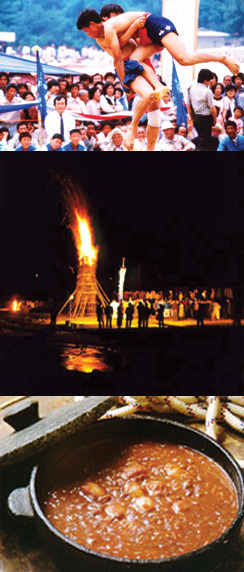
ForKorea’s younger generation, Valentines’ Day, Peppero Day, and Christmas seem to be the biggest celebrations of the year. When these days approach, the streets are full of vendors trying to sell chocolates, candies, and flowers. However, with the exception of
“Our family does celebrate New Year’s Day and Chusok, but not the other traditional days. I know the names of those days, but I am not sure of their origins and importance,” said Cho Jun-ji (International Studies, 2)
Kim Yoon-sun (Sociology, 3) said that she thinks
Cho believes that this phenomenon is also a problem of the Korean media. “There is a need for the media to advertise more about these traditional days. I believe the reason why Valentines’ Day is famous while traditional Korean holidays are not, is because people can see many advertisements on TV and newspapers even a month before Valentine’s Day.” Therefore, the Ewha Voice is taking up its civic duty and striking a blow for the preservation of traditional culture. Here is our guide to the lesser-known traditional festivals of
After the festive New Year’s Day on January 1, the second holiday that greets Koreans is Jongwol Daeborum, a day that has been celebrated for driving away misfortune and evil, since the moon is full and bright. First, an alcoholic drink called kwibalgi sul is given to the elders in the family with the hope that it will sharpen their ears and help them hear good news. Moreover, people eat peanuts, walnuts, and chestnuts—as many as the number of years they have lived—believing that the loud crunching noises from the nuts scare away evil spirits and devils. This custom is called burom kkada. At night, people climb to the top of a mountain at the rear end of the village and do the talmaji, or viewing of the moon. On Jongwold Daeborum, it is said that if you say your wishes for that year, they will come true.
Dano, or the fifth day of the fifth lunar month, is the oldest Korean holiday, and marks the beginning of the summer season and a day when Koreans pray for favorable weather for farming and fishing and a good fall harvest. Various events such as ssirum, Korean-style wrestling, are held on this day with the highlight of seeing the winning wrestler awarded a bull, no doubt the top prize for an agrarian society.
Dongji Day, the winter solstice, is another holiday that held a significant meaning in the past but is slowly being forgotten due to the infusion of foreign culture. Traditionally, the winter solstice was a time to make new calendars marked with seasonal sub divisions. On this day, Koreans eat red bean porridge. The red bean was believed to have the mysterious power of driving evil spirits away because in Korean, the world red (buldda) originated from the world for bright light (baldda), which the people thought evil spirits hated. They believed that evil spirits are most active during Dongji Day because it has the longest night of the year. Dongji can be said to be equivalent to the western holiday, Halloween.
Finally, there are two other important days in Korean tradition: Hansik and Chilsok. Hansik, which means cold food, is a holiday falling on the 105th day after the winter solstice. On this day, most farmers began preparing their rice paddies. Government officials head to visit the ancestral shrines of the royal family and ordinary people, after a brief ancestoral memorial service, visit their ancestors’ graves. Chilsok, celebrated on seventh of July, originated from a legend about a herdsman and a weaver who loved each other so deeply that it made the god of Heaven angry. The god made them cross the galaxy to meet each other only once a year, which is on the seventh day of the seventh month. Around this time of year, pumpkins, cucumbers and Korean melons ripen, which is why Koreans traditionally make pumpkin fritters and pray to the god of the seventh star.

